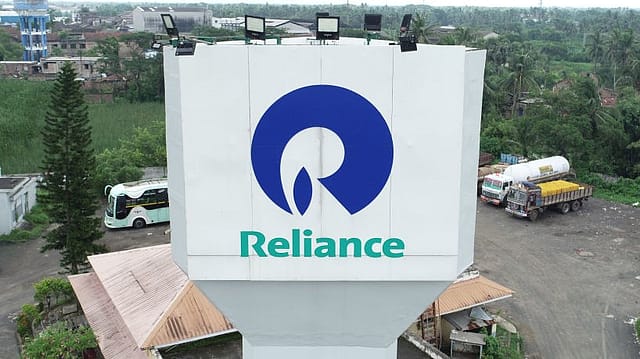RIL targets 100 GW from renewables by 2030; commits ₹75,000 crore for new energy biz
ADVERTISEMENT

Reliance Industries plans to accelerate and enable the installation of 100 gigawatts (GW) of renewable energy generation by 2030, says its chairman Mukesh Ambani while addressing shareholders at the 46th annual general meeting (AGM) of the company. He also committed to deploying ₹75,000 crore to build a new energy manufacturing ecosystem.
“We are progressing well to deploy our committed capital of ₹75,000 crore to build our new energy manufacturing ecosystem. This will enable us to accelerate giga-scale production for round-the-clock power and for large-scale Green Hydrogen production for green chemicals manufacturing, as well as for green mobility,” Ambani tells shareholders.
Unveiling plans for the new energy business, RIL chairman says the oil-to-telecom conglomerate remains focused on fast-track execution of its Dhirubhai Ambani Green Energy Giga manufacturing complex at Jamnagar.
“Our first priority is to deliver a fully-integrated, end-to-end Solar PV manufacturing ecosystem. This will be one of the largest, most technologically advanced, flexible, and most cost-competitive Solar giga factory globally, and will be converting sand into Solar PV modules. Our Solar giga factory will include manufacturing of PV Modules, Cells, Wafers and Ingots, Polysilicon, and Glass at a single location in Jamnagar. We will target to bring the factory on-stream in a phased manner by the end 2025,” he informed shareholders.
December 2025
The annual Fortune 500 India list, the definitive compendium of corporate performance, is out. This year, the cumulative revenue of the Fortune 500 India companies has breached $2 trillion for the first time. Plus, find out which are the Best B-schools in India.
Ambani further says that the company will be deploying leading-edge heterojunction technology for manufacturing one of the highest-efficiency Solar PV cells and modules globally, for utility-scale and roof-top power generation.
He also informed shareholders that the company will pursue wind power generation and partner with the world’s leading technology players in wind equipment manufacturing to deliver most cost-efficient solutions. “Towards this, we have made significant progress in developing a manufacturing ecosystem critical to achieving cost-efficient wind power generation at giga scale. One of the significant cost drivers in the manufacturing of wind blades is carbon fibre. Our foray into manufacturing carbon fibre at large scale provides us with a unique advantage to further integrate and reduce cost of wind turbines.”
“We will further leverage our engineering and construction capabilities, along with our giga-scale manufacturing ecosystem, to accelerate and enable installation of at least 100 GW of renewable energy generation by 2030,” he says.
He further states that the concurrent priority is to set up battery giga factory by 2026, which will manufacture battery chemicals, cells and packs, leading all the way up to containerised energy storage solutions. This will include a battery recycling facility to deliver an integrated ecosystem. “We will start with LFP chemistry which has been proven at scale for its safety, stability, and life, targeting to produce LFP based solutions at world beating lifecycle costs. Simultaneously, we are focused on fast-track commercialisation of our sodium ion battery technology.”
He also reiterated his commitment to build technology leadership positions by industrialising sodium ion cell production at megawatt level by 2025, and rapidly scaling up to giga scale thereafter.
Ambani says that integration of energy storage with wind and solar power generation is critical to provide grid-connected, round-the clock electricity. “We are well on our way to prove this integration at mega-watt scale in the next few quarters at Jamnagar. This will be followed by grid-scale deployment of batteries to convert intermittently captured photons into electrons and make them available round the clock for our captive requirements, as well as for India’s growing energy needs.”
On progress on green hydrogen, he says, “We have a roadmap towards achieving our targeted cost of electrolysers, and in turn, green hydrogen”. Till the last AGM, the company was working on two critical components for delivering the most cost competitive green hydrogen and its derivatives – cost of renewable power generation, and installed cost of electrolyser for giga-scale deployment.
In collaboration with technology partners, RIL is firmly on its way to successfully demonstrate this first at mega watt (MW) scale and optimise this further to giga scale, he says. “In parallel, we will set up a fully-integrated, automated, giga-scale electrolyser manufacturing facility. This will enable us to establish large-scale Green Hydrogen production at Jamnagar, gradually transition our captive requirements, and simultaneously integrate with Green Ammonia and Green Methanol production for domestic and international markets.”
The company is uniquely positioned to be a global leader in green chemicals manufacturing by leveraging its O2C infrastructure, talent, and execution capabilities, he adds.
Reliance will collaborate with global technology and product companies, including startups focused on commercialising emerging and disruptive technologies. “Our transition to Net Carbon Zero and building a sustainable chemicals business will result in increased revenue, reduced energy costs, improved profitability, and providing a near perennial growth platform in India and overseas for our materials and energy business,” he says.
